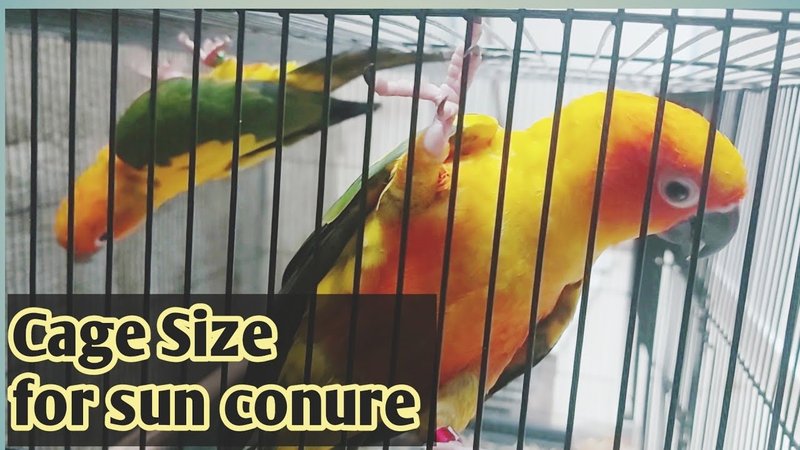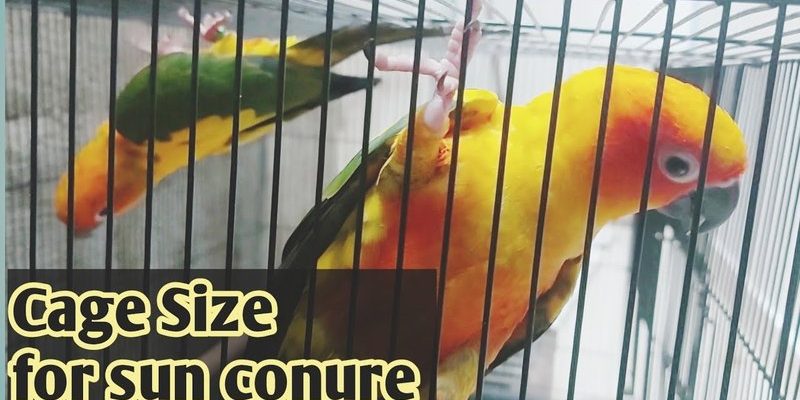
A conure is an active, playful bird that thrives in a lively environment, so the size of their cage is super important. While it’s tempting to buy the cutest one that catches your eye, choosing the right size cage can impact their happiness and health. Some popular options include brands like Prevue Hendryx or A&E Cage Company, known for their spacious designs. Let’s dive into what you need to consider.
Understanding Conure Sizes and Needs
Before we get into cage sizes, let’s take a moment to understand what conures are like. Conures are small to medium-sized parrots, usually ranging from about 10 to 20 inches long, depending on the species. They’re energetic little bundles of joy that enjoy climbing, flying, and playing. Because of their active nature, they need plenty of space to stretch their wings and explore.
Generally, conures can be divided into a few categories, such as green-cheeked, sun, and nanday conures. Each type has its own personality, but all share the need for ample space in their environment. You might be thinking, “Is my conure going to be comfortable in a smaller cage?” Honestly, the answer is usually no. A cramped space can lead to stress and health problems.
Minimum Cage Size Requirements
So, what’s the rule of thumb for cage sizes? As a starting point, the minimum cage size for a conure should be about 24 inches long, 24 inches wide, and 24 inches high. This gives them a little room to move about. However, if you really want your conure to thrive, aim for a cage that’s even larger, like 30 x 30 x 36 inches. This extra space allows for more accessories and activities, leading to a happier bird.
You might wonder, “Why does size matter so much?” Here’s the thing: A larger cage allows for more perches, toys, and even play areas. Conures love to chew, climb, and explore, and without enough space, they can become bored or unhappy. Consider it like living in a tiny apartment versus a spacious house—you’d want the latter, right?
Choosing the Right Style of Cage
When it comes to styles, not all cages are created equal. You have options like aviary-style cages, which are tall and spacious, or playtop cages, which offer extra platforms for your bird to hang out. Each style can have its advantages depending on your living situation.
For instance, if you have limited floor space, a tall aviary cage can provide plenty of vertical space for your bird to climb. However, if you want a cage that opens up for easy interaction, a playtop might be a better fit. Think about where you’ll place the cage in your home. Will it be in a busy area where the family gathers, or in a quieter corner?
The Importance of Bar Spacing
Another factor that often gets overlooked is bar spacing. For conures, the bars should be spaced about ½ to ¾ inch apart. This spacing ensures your bird can’t escape but is still safe and comfortable inside. If the bars are too far apart, your conure may squeeze through or, worse, get stuck.
Additionally, the material of the cage itself matters. Stainless steel cages are durable and easy to clean, while powder-coated cages come in colorful designs. Both options have pros and cons, but the key is to choose something that fits your lifestyle and your conure’s needs.
Decorating the Cage
Now that you’ve settled on size and style, let’s talk about how to furnish your conure’s new home. Think of decorating their cage like setting up a playground. Include perches of varying widths to help exercise their feet and keep them entertained. Adding ropes, swings, and chew toys can also keep your conure engaged and mentally stimulated.
Here are a few ideas for enriching their environment:
- Natural wood perches for climbing.
- Toys with different textures for chewing and playing.
- Hiding spots, like small huts or boxes.
Creating this kind of environment encourages your conure to socialize, exercise, and exhibit natural behaviors.
Common Mistakes to Avoid
One of the most common mistakes new conure owners make is selecting a cage that’s too small. Just because a cage is marketed for small birds doesn’t mean it’s right for a busy conure. Another mistake is not considering the cage’s placement. Conures need to be part of the household activities. A cage in a high-traffic area can help them stay social, but too much noise or commotion can also stress them out.
You might also overlook cleaning and maintenance. A cage that’s too cluttered can lead to health issues for your bird. Make sure you can easily access all parts of the cage for regular cleaning. A clean environment is crucial as it helps prevent illness and keeps your conure healthy.
Choosing the right cage for your conure is more than just a purchase; it’s an investment in their happiness and well-being. By ensuring the size is appropriate, picking the right style, and creating a stimulating environment, you can help your conure thrive.
Remember, a happy bird is a healthy bird. So, take your time in selecting the perfect cage size and style, and don’t hesitate to explore different options until you find what works best for both you and your feathered friend. Give them the space they need, and you’ll be rewarded with a joyful companion for years to come.

